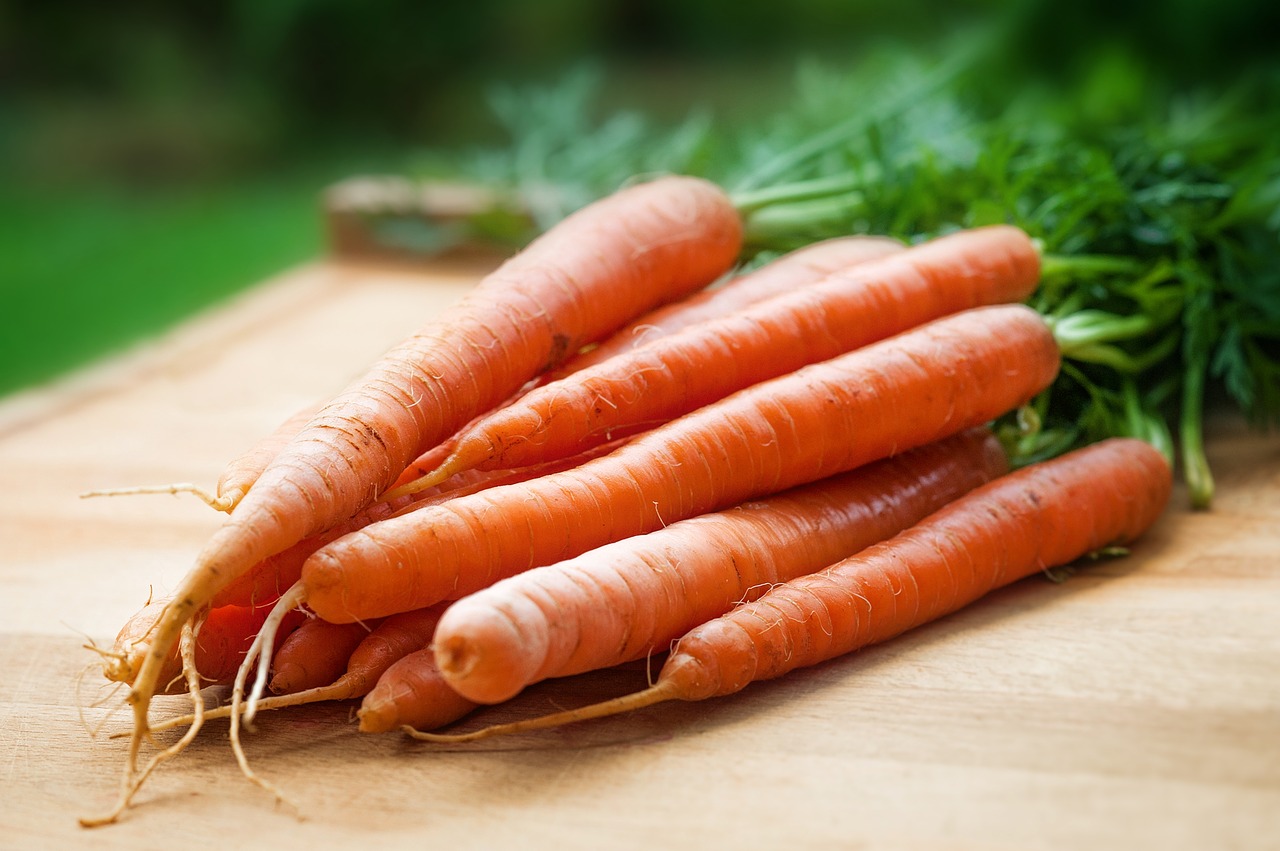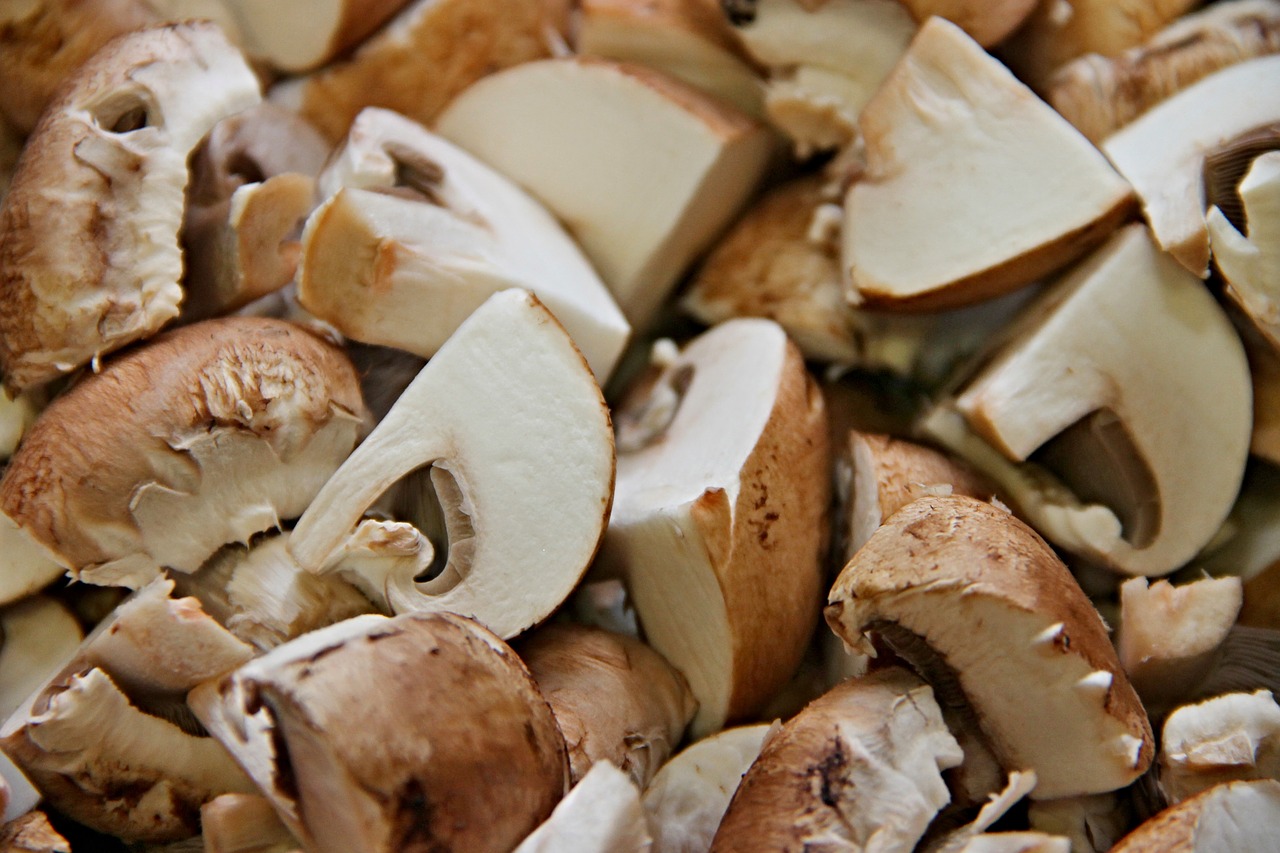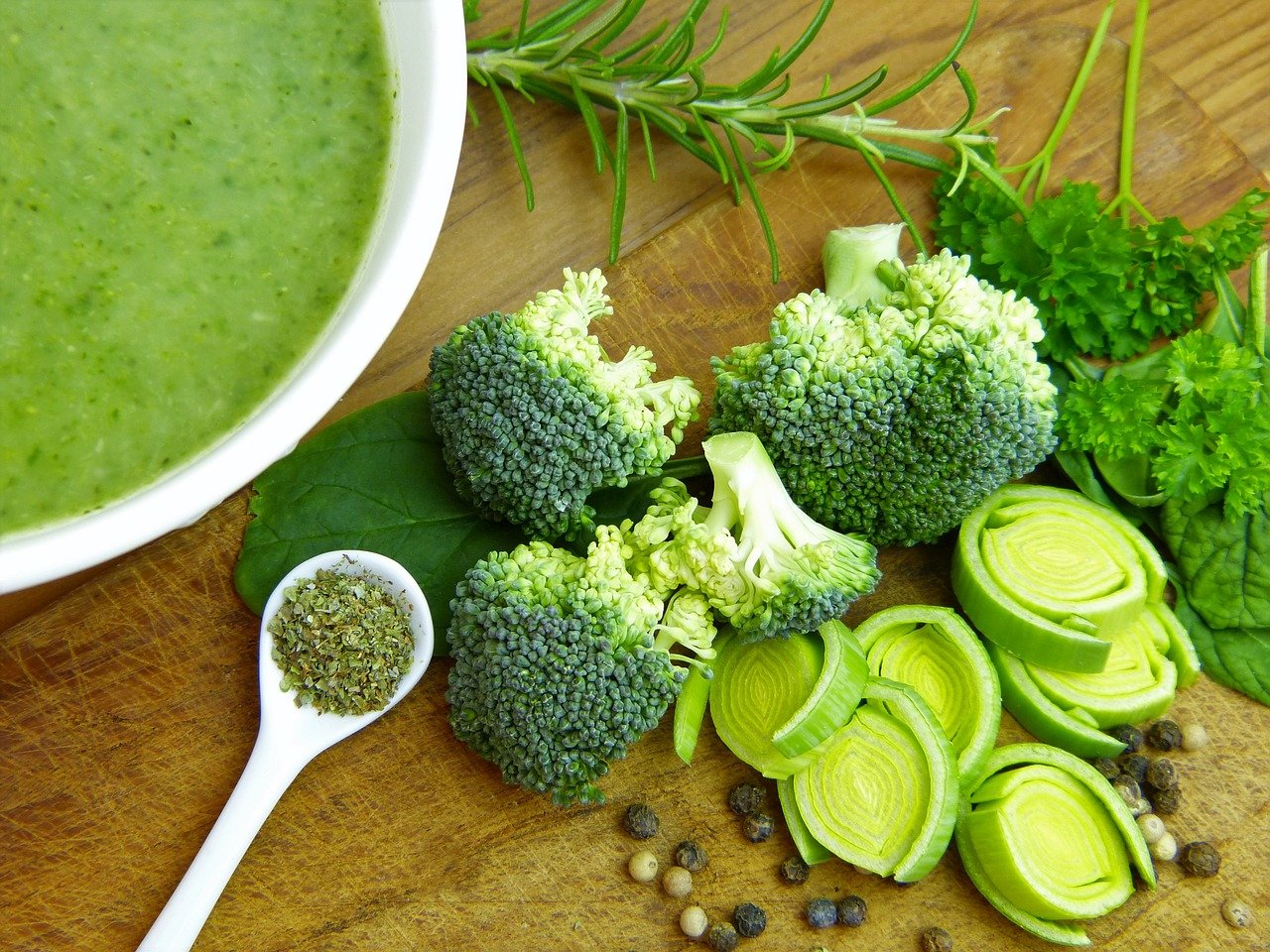Root vegetables are a type of vegetables that grow underground. While they may not have the most pleasing appearance compared to fruits and other vegetables, root vegetables are just as nutritious, despite the bad rep they get for being high in carbohydrates.
Unlike other vegetables that grow as the “fruits” of a plant, root vegetables instead concentrate all the nutrients they absorb from the ground into the “storage root”, a.k.a. the vegetable that we consume. This makes root vegetables have a particularly high concentration of vitamins and minerals – even more so than other vegetables.
Sadly, root vegetables have a bad reputation for having high carbohydrates, which many avoid as it is often stored in the body as fat when it isn’t utilized for energy.[1]
But don’t let this fact hold you back from eating these precious vegetables. The key to eating root vegetables is to prepare them the right way, which is by adding as little unhealthy fats, sugars, and sodium as you can. Including a wide variety of root vegetables to your diet will also help you incorporate a rainbow of nutrients, as opposed to just relying on a single source.
Here are some of the health benefits of eating root vegetables.
- Low In Calories
If you’re especially health conscious, one of the best traits of root vegetables is that they’re low in calories compared to other foods – all while being nutrient dense.
High calorie diets are notorious for its association with a higher risk of chronic diseases, such as obesity, type 2 diabetes, dementia, and osteoarthritis. Unfortunately, this has become increasingly widespread as a result of the popularity of fast and processed foods.[2]
When it comes to following a balanced diet, it is wise to include low calorie and nutrient-dense foods in your diet, such as root vegetables. Unlike the aforementioned fast and process food (“empty calories”), you’ll feel more satisfied eating these nutrient-dense foods without devouring a day’s worth of calories.
- High In Antioxidants
All root vegetables are rich in carotenoids, which are powerful antioxidants which also give them their vibrant colors.
These antioxidants will help protect your body from the damage caused by free radicals, which are the unstable atoms that accelerate cell degradation. Various studies have linked oxidative stress as a result of free radicals to a higher risk of developing chronic diseases and accelerated cognitive decline.[3]
Your body is constantly exposed to these free radicals, and their effects can be accelerated by the consumption of fried foods, regular smoking, alcohol consumption, and exposure to toxic chemicals.
While antioxidants cannot reverse the damage caused by free radicals, filling your diet with antioxidant-rich foods can slow down or even prevent its effects.
- High In Fiber
Just like most plant-based food, root vegetables have an exceptionally high concentration of dietary fibers.
Fiber is one of the most important nutrients a person would need to maintain a healthy body.[4]
Firstly, dietary fibers support the digestive system. Dietary fibers help bulk up the food the goes through your body, which helps it pass through smoothly in your digestive system. This also makes the food easier to excrete, as the bulk helps your stool move easily.
Dietary fibers are also crucial for lowering cholesterol levels and blood sugar levels. Fiber slows down the absorption of sugars, thus preventing blood sugar spikes that can cause insulin resistance (which leads to type 2 diabetes). Fiber also lowers the amount of low-density lipoprotein, or “bad” cholesterol in your bloodstream.
A high fiber diet can also help you maintain a healthier weight. High fiber foods are much more filling than low fiber foods, which means that you don’t have to eat much just to feel full. This helps you manage your calorie intake easier as compared to low fiber food.
- Great Source of Vitamin A
Most root vegetables are high in vitamin A, a nutrient that primarily supports bone and eye health.
First and foremost, vitamin A is crucial for maintaining a good eyesight. This is because vitamin A is needed to convert light into the electrical signal to your brain, which translates it into what you can see right now. Consequently, one of the first symptoms of vitamin A deficiency is night blindness, which is often experienced by those who lack adequate food choices.[5]
Vitamin A is also necessary for proper bone health and development. In fact, people who are low in vitamin A were found to be more likely to experience bone fractures than people who receive an adequate amount of vitamin A.
- Rich in B Vitamins
B vitamins are a group of nutrients that are crucial for maintaining your body’s processes down to the molecular level. Root vegetables also happen to be a great source of these B vitamins – especially folate (vitamin B9) and pyridoxine (vitamin B6).
Folate is a vitamin that plays an important role in cell growth, amino acid metabolism, the formation of blood cells, and cell division. Folate is especially crucial during important stages of development, such as pregnancy, infancy, and adolescence.[6]
On the other hand, pyridoxine is crucial in fat and carbohydrate metabolism, as well as the creation of red blood cells and neurotransmitters.[7]
- High in Vitamin C
Vitamin C (ascorbic acid) is another essential nutrient that you may already have heard of. While it is most popular for its immune-boosting properties, vitamin C is also instrumental in the formation of collagen, absorption of iron, wound healing, and the maintenance of bones and teeth. Most root vegetables contain a significant amount of vitamin C.
Vitamin C is also considered a powerful antioxidant. One study even found that consuming more vitamin C can increase your blood antioxidant levels by up to 30%.[8]
Vitamin C boosts your immune system by stimulation the production of white blood cells, which are the little warrior cells in your body that fights off dangerous invaders. Vitamin C also helps these white blood cells function more effectively when killing off harmful molecules.[9]
- Contains Anti-Inflammatory Compounds
Root vegetables contain plenty of anti-inflammatory minerals and vitamins that will help keep your body healthy.
Inflammation is a normal function of your body. Its main purpose is to fight off potentially harmful invaders, such as pollen, chemicals, or microbes. Unfortunately for some people, their body may become under a constant state of inflammation – in medical terms, chronic inflammation.
Chronic inflammation can be described as a “silent killer”. It is systemic, yet its symptoms are subtle. There are also quite a few tests that can detect chronic inflammation. People who are at a higher risk of developing chronic inflammation are those who follow unhealthy lifestyles (obesity, smoking, alcohol, and chronic stress), are constantly exposed to harmful chemicals/pollutants, or have very little physical activity.[10]
In the long run, chronic inflammation can start damaging your own healthy cells, tissues, and organs, putting you at a higher risk of serious chronic illnesses. This includes cancer, heart disease, arthritis, type 2 diabetes, obesity, and even neurodegenerative diseases.[11]
The 7 Healthiest Root Vegetables You Can Eat
If you’d like to get more of these superfood into your diet, here are some great examples of root vegetables that you can try.[12] Not only are they healthy, but most of these root vegetables aren’t hard to find either.
- Sweet Potatoes

Sweet potatoes are the regular white potatoes’ healthier sibling (although they’re quite healthy, too!).
Sweet potatoes are packed with fiber, vitamin C, manganese, and vitamin A, along with antioxidants such as beta-carotene, chlorogenic acids, and anthocyanins.
One study found that the consumption of sweet potato extract for 12 weeks yielded an improved blood sugar control among diabetes patients.[13]
Sweet potatoes are versatile and can be enjoyed just like a regular potato. They can be boiled, baked, roasted, or sauteed as a snack, a side dish, or as an addition to salads and sandwiches.
- Turmeric
You may commonly encounter turmeric as the main component of curries. Turmeric is touted as one of the top superfoods due to the potency of its beneficial compounds.
Turmeric uniquely contains the active compounds curcumin, which is prized for its potent anti-inflammatory and antioxidant activity. Curcumin has been widely studied and was found to be an effective fighter against depression, heart disease, cancer, and cognitive decline.[14]
One of the most common ways to consume turmeric is in powdered form, where it can be taken as a beverage, or added as a flavoring to dishes.
- Carrots
Apart from being one of the most common, carrots often beat other root vegetables in terms of nutritional value, boasting an impressively higher concentration of the same vitamins and minerals.
Carrots are a powerhouse of vitamin A, K, and beta carotene. The carrot’s impressive vitamin A content is the reason why carrots became synonymous with eye health!
Carrots are also highly versatile, and they can be enjoyed both raw and cooked.
- Garlic
Garlic is another popular flavoring, thanks to its strong flavor and aroma that is loved by seekers of savory flavors.
Apart from the popular lore of being a vampire-deterrent, garlic had also been recognized for centuries for its medicinal properties. This is known to come from the compound allicin, which has powerful anti-inflammatory and antioxidant properties.[15]
- Onions
Just like garlic, onions are staple in many cuisines – and contain the beneficial compounds allicin.
Additionally, onions are high in fiber, vitamin C, and flavonoid antioxidants.
In fact, one study found that a higher consumption on onions is linked to a lower risk of common types of cancers.[16]
- Beets
Beets are another popular root vegetable that is packed with fiber, folate, and manganese.
However, what makes beets special is that they are high in nitrates, which are plant compounds that helps the blood vessels dilate. This means that it can help lower your blood pressure levels by letting your blood flow more smoothly, thus protecting your heart health.[17]
- Ginger
A relative of turmeric, ginger is equally beneficial to our health.
Ginger is loaded with antioxidants, especially gingerol, which have known antioxidant and anti-inflammatory activity. Some studies even found that ginger extract is effective in relieving pain, such as in menstrual cramps and osteoarthritis.
Conclusion
Don’t let its carbohydrates deter you – root vegetables are among the healthiest foods available, with impressive loads of antioxidants, vitamins, and minerals, even when compared to other plant-based food.
Root vegetables are also especially high in fiber while being low in calories – which means that it won’t take a lot for you to feel full from eating them.
Root vegetables are also highly flavorful and versatile, and thus you can find plenty of ways to incorporate them into your diet.
References
[1] Harvard Health Publishing. (2018, August) The pros and cons of root vegetables. Retrieved on December 11, 2020 from https://www.health.harvard.edu/staying-healthy/the-pros-and-cons-of-root-vegetables
[2] Farooqui, A. A. (2015). Effects of Long Term Consumption of High Calorie Diet on Neurological Disorders. In High Calorie Diet and the Human Brain (pp. 245-275). Springer, Cham. DOI: https://doi.org/10.1007/978-3-319-15254-7_9
[3] Villines, Z. (2017, July 29) How do free radicals affect the body? Retrieved on December 11, 2020 from https://www.medicalnewstoday.com/articles/318652
[4] Mayo Clinic. (2018, November 16) Dietary fiber: Essential for a healthy diet. Retrieved on December 11, 2020 from https://www.mayoclinic.org/healthy-lifestyle/nutrition-and-healthy-eating/in-depth/fiber/art-20043983
[5] Sommer, A. (2008). Vitamin A deficiency and clinical disease: an historical overview. The Journal of nutrition, 138(10), 1835-1839. https://doi.org/10.1093/jn/138.10.1835
[6] Ware, M. (2018, June 26) Why is folate good for you? Retrieved on December 11, 2020 from https://www.medicalnewstoday.com/articles/287677
[7] National Institutes of Health. (2020, February 24) Vitamin B6. Retrieved on December 11, 2020 from https://ods.od.nih.gov/factsheets/VitaminB6-HealthProfessional/
[8] Kim, M. K., Sasazuki, S., Sasaki, S., Okubo, S., Hayashi, M., & Tsugane, S. (2003). Effect of five-year supplementation of vitamin C on serum vitamin C concentration and consumption of vegetables and fruits in middle-aged Japanese: a randomized controlled trial. Journal of the American College of Nutrition, 22(3), 208–216. https://doi.org/10.1080/07315724.2003.10719295
[9] Raman, R. (2020, February 18) 7 Impressive Ways Vitamin C Benefits Your Body. Retrieved on December 11, 2020 from https://www.healthline.com/nutrition/vitamin-c-benefits
[10] Gibbons, A. (2012, May 31) ‘Silent Killer’ May Be Disease of the Affluent. Retrieved on December 11, 2020 from https://www.sciencemag.org/news/2012/05/silent-killer-may-be-disease-affluent
[11] Longhurst, A. (2018, July 27) Understanding and Managing Chronic Inflammation. Retrieved on December 11, 2020 from https://www.healthline.com/health/chronic-inflammation
[12] Link, R. (2018, December 6) The 13 Healthiest Root Vegetables. Retrieved on December 11, 2020 from https://www.healthline.com/nutrition/root-vegetables
[13] Ludvik, B., Neuffer, B., & Pacini, G. (2004). Efficacy of Ipomoea batatas (Caiapo) on diabetes control in type 2 diabetic subjects treated with diet. Diabetes care, 27(2), 436–440. https://doi.org/10.2337/diacare.27.2.436
[14] Gunnars, K. (2018, July 13) 10 Proven Health Benefits of Turmeric and Curcumin. Retrieved on December 11, 2020 from https://www.healthline.com/nutrition/top-10-evidence-based-health-benefits-of-turmeric
[15] Borlinghaus, J., Albrecht, F., Gruhlke, M. C., Nwachukwu, I. D., & Slusarenko, A. J. (2014). Allicin: chemistry and biological properties. Molecules (Basel, Switzerland), 19(8), 12591–12618. https://doi.org/10.3390/molecules190812591
[16] Galeone, C., Pelucchi, C., Levi, F., Negri, E., Franceschi, S., Talamini, R., Giacosa, A., & La Vecchia, C. (2006). Onion and garlic use and human cancer. The American journal of clinical nutrition, 84(5), 1027–1032. https://doi.org/10.1093/ajcn/84.5.1027[17] Kapil, V., Khambata, R. S., Robertson, A., Caulfield, M. J., & Ahluwalia, A. (2015). Dietary nitrate provides sustained blood pressure lowering in hypertensive patients: a randomized, phase 2, double-blind, placebo-controlled study. Hypertension (Dallas, Tex. : 1979), 65(2), 320–327. https://doi.org/10.1161/HYPERTENSIONAHA.114.04675


















